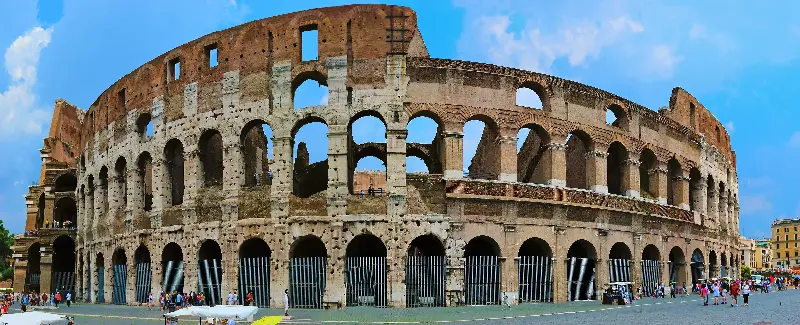Across continents and centuries, cultural architecture stands as a fervent tribute to humanity’s creativity, resilience, and stories. Each building carved from stone or shaped in timber serves as a silent chronicler—an edifice that breathes history and whispers the lives of those who once moved within their walls. From intricate temples to awe-inspiring palaces, these marvels invite us to pause, look deeper, and let our imaginations travel through time and tradition.
Ancient Wonders That Echo Through Centuries

Few architectural wonders capture the weight of history like Egypt’s monumental pyramids. Stretching across the Giza plateau, these colossal tombs served not only as royal resting places for pharaohs but also as architectural puzzles. The Great Pyramid, constructed from over two million blocks of limestone, has long fascinated historians and engineers alike, boasting precision and ambition that remain unmatched. What whispers through its corridors is not just a tale of kings and gods, but also the ingenuity of thousands of workers whose stories have faded into time.

Similarly, in the heart of Rome, the Colosseum towers between past and present. Its arches and columns, crafted two millennia ago, tell stories of gladiatorial spectacle and community. Designed for more than 50,000 spectators, this ancient amphitheater stands testament to the Roman Empire’s sophisticated engineering and love for public entertainment. Imagine the roar of the crowd, the thrill of spectacle—its stone has absorbed echoes that still resonate.
Sacred Spaces and Spiritual Heritage

Around the world, places of worship have long been canvases for cultural expression. In India, the Taj Mahal gracefully crowns the Yamuna riverbank. Constructed as an eternal symbol of love by Emperor Shah Jahan for his wife Mumtaz Mahal, the white marble mausoleum blends Persian, Islamic, and Indian architectural elements. Its marble shifts hue with the sun, holding within its domes an endless romance between art and memory.

Travel east to Japan and discover Kinkaku-ji, the Golden Pavilion, gleaming amidst tranquil gardens. Originally built in the 14th century, this Zen Buddhist temple is famous for its top two floors, completely covered in gold leaf. The building is cleverly mirrored in the surrounding pond, creating a harmonious view that reflects Buddhist ideals of balance and tranquility. Each morning mist or autumn leaf adds new depth to the pavilion’s centuries-old serenity, inviting contemplation and peace.
Cultural Identity Cast in Stone

Great architecture is often a reflection of national identity and pride. The Neuschwanstein Castle in Germany, for instance, conjures images straight from a fairy tale. Conceived by King Ludwig II in the 19th century, the castle was inspired by both Romanesque architecture and German legends. While critics questioned its extravagance, Neuschwanstein remains one of Europe’s most beloved buildings, influencing countless fantasy films—including the design of Disney’s Cinderella Castle.

Another marvel stands on Moscow’s Red Square: Saint Basil’s Cathedral. Its kaleidoscopic onion domes are instantly recognizable, but the cathedral also tells a tale of unity—constructed to commemorate the capture of Kazan and Astrakhan, it represents the coming together of diverse communities under one nation. Each dome holds a different pattern and color, reflecting the mosaic of people the cathedral celebrates.
Architectural Innovations That Changed the Game

Across the globe, certain structures stand out not just for their appearance, but for the innovations they introduced. The Sydney Opera House, completed in 1973, revolutionized modern design with its bold sail-like shells. Danish architect Jørn Utzon’s vision was initially deemed unbuildable, yet today, the Opera House is an icon of Australia and a marvel of 20th-century engineering. It tells a modern story—of overcoming challenges, embracing creativity, and bridging continents with music and art.

In Spain, Antoni Gaudí reimagined what a cathedral could be with his masterwork, the Sagrada Família. Its twisting spires and organic shapes draw from nature, religion, and Catalan modernism. Begun in 1882 and still under construction, the basilica embodies both the patience of its craftsmen and the relentless pursuit of originality. Its stonework seems to flow and grow, telling a story of evolution—of both faith and form.
Living Legacies and Future Inspirations
What unites these marvels is not simply their grandeur or fame. Each building, whether a sacred shrine or a royal palace, stands as proof that architecture is storytelling in three dimensions. The lines and layers hold accounts of devotion, love, ambition, and ingenuity—stories we can read not in books, but in the shapes and shadows around us.
As visitors walk through centuries-old corridors or stand before shimmering facades, they become part of the continuing tale. Cultural architecture, with all its whispers and wonders, invites us to discover not only what came before, but also what we might build for generations yet to come. The world’s architectural marvels will always have new stories to share—so long as we’re ready to listen.
